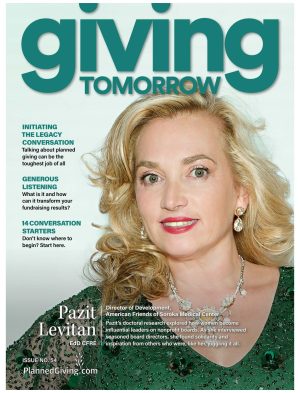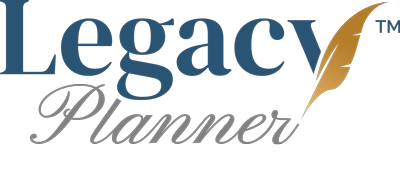The Evolution of Philanthropic Expectations: A Wake-Up Call for Nonprofits
For decades, many nonprofits have operated with a reactive approach to fundraising—chasing grants, hosting emergency campaigns, and depending on one-time donations. However, the philanthropic landscape has undergone a dramatic transformation. Today, foundations, various grantmakers and major donors are shifting their focus, prioritizing nonprofit sustainability over short-term fixes. The message resonating across boardrooms and donor meetings is unambiguous: funders no longer support organizations that fail to plan for the future.
This paradigm shift requires nonprofits to reevaluate their entire operational model. Organizations clinging to outdated fundraising tactics find themselves increasingly marginalized in competitive grant cycles. Forward-thinking nonprofits, by contrast, are embracing strategic financial planning and demonstrating long-term viability—making them significantly more attractive to sophisticated donors.
Grantmakers now favor nonprofits with long-term financial planning over those focused on immediate needs. Strategic vision beats emergency fundraising in today's competitive grant landscape. #NonprofitFunding
TWEETABLE INSIGHT Tweet
The Critical Role of Planned Giving in Ensuring Nonprofit Longevity
Nonprofits that embrace comprehensive planned giving strategies and robust long-term funding models are gaining unprecedented favor among foundations. Unlike organizations operating paycheck-to-paycheck, those investing in endowments, donor-advised funds, and structured major gift programs prove they can sustain meaningful impact without perpetual financial distress. Funders increasingly view these organizations as responsible stewards, visionary partners, and worthy investment vehicles.
The contrast has become stark: nonprofits failing to develop diversified fundraising streams face growing skepticism from grantmakers. Modern foundations and philanthropists demand assurance that their grants build sustainable infrastructure rather than merely plugging temporary financial gaps.
Donors expect deeper relationships, too—especially those who are making a significant gift. Implementing sophisticated stewardship strategies ensures enduring donor commitment. And today’s donors expect far more than periodic appeals; they also demand transparency regarding how their contributions create measurable impact over extended timeframes. Planned giving offers a structured pathway to engage donors in meaningful, lasting partnerships based on shared values and vision.
Donors prefer simple, relationship-focused legacy programs over technical calculators and printed newsletters. Personal impact stories beat tax explanations every time. #PlannedGiving
TWEETABLE INSIGHT Tweet
The Compounding Impact of Policy Shifts: Political Changes and Government Funding Reductions
Smart nonprofits build funding models that withstand policy changes under any administration. Diversification is your shield against shifting government priorities. #NonprofitResilience
TWEETABLE INSIGHT Tweet
Recent administrations’ funding adjustments and fundamental shifts in government priorities have made financial independence critical for nonprofits. Organizations historically dependent on government grants have experienced significant funding recalibrations, exposing fundamental weaknesses in their financial architecture.
The Trump administration implemented policy changes that altered the nonprofit funding landscape, requiring organizations to reevaluate their financial strategies. These changes represented a business reality rather than a political statement—successful nonprofits adapted by strengthening their private funding sources and diversifying revenue streams.
Consequently, foundations now require concrete proof of financial resilience before awarding grants. Organizations must demonstrate comprehensive sustainable revenue strategies, including planned giving programs, corporate partnerships, and endowment growth initiatives. Without these essential elements, organizations risk tumbling into financial instability, permanently damaging credibility with institutional funders.
This adaptation necessity carries particular significance considering changes in tax policy affecting charitable deductions and donor behavior patterns. The Tax Cuts and Jobs Act of 2017 altered giving incentives, changing the financial calculations for many donors. Nonprofits now compete more strategically for discretionary dollars, making sophisticated fundraising and legacy giving programs essential components of organizational sustainability.
Understanding Donor Demographics: The Generational Wealth Transfer Opportunity
$68 trillion in wealth transfers to younger generations over next 20 years. Nonprofits without legacy programs will miss the biggest fundraising opportunity in history. #WealthTransfer
TWEETABLE INSIGHT Tweet
One silver lining is that this upheaval comes at a time of extraordinary opportunity for organizations with legacy giving programs. The nonprofit sector stands at the precipice of the largest wealth transfer in human history—which could translate into the biggest nonprofit funding windfall in history. Over the next twenty years, an estimated $68 trillion will transfer from Baby Boomers to younger generations. This unprecedented wealth movement creates extraordinary opportunities for nonprofits prepared to engage in sophisticated planned giving conversations.
Organizations investing in legacy giving programs position themselves to capture significant portions of this generational wealth transfer. By contrast, nonprofits without established planned giving infrastructure risk missing this historic opportunity entirely.
Millennials and Gen Z donors approach philanthropy differently than previous generations, prioritizing transparency, impact measurement, and long-term relationships with organizations they support. Nonprofits must adapt their communication strategies accordingly, emphasizing data-driven results and meaningful engagement opportunities beyond financial contributions.
Modern donors don't want technical gift vehicle explanations—they want to see how their legacy creates generational impact. Stories beat tax code every time. #DonorMotivation
TWEETABLE INSIGHT Tweet
The Alarming Decline in Traditional Donor Funding: Strategic Adaptation Required
Single-source funding is the riskiest nonprofit strategy today. Organizations with multiple revenue streams survived recent giving pattern changes; others struggled. #FundraisingStrategy
TWEETABLE INSIGHT Tweet
Individual charitable giving patterns have shifted substantially in recent years. This evolution represents not merely cyclical fluctuation but a fundamental restructuring of donor priorities. Modern donors have become increasingly selective, favoring nonprofits demonstrating clear financial strategies and long-term vision over organizations relying exclusively on emotional appeals and emergency fundraising tactics.
Wealthy donors and family foundations, in particular, seek organizations with established endowments, structured planned giving programs, and diversified income streams. This evolutionary shift necessitates that nonprofits transcend outdated fundraising models and implement comprehensive donor retention strategies to remain competitive in an increasingly sophisticated philanthropic marketplace.
Additionally, donor behavior continues evolving through increased digital engagement channels. With crowdfunding platforms, social media campaigns, and peer-to-peer fundraising becoming ubiquitous, nonprofits must invest in data-driven fundraising approaches and personalized donor engagement strategies to ensure continued support across multiple giving platforms.
The Impact of Economic Uncertainty on Nonprofit Sustainability
Economic volatility creates additional challenges for nonprofit financial planning. Organizations lacking diversified funding streams become particularly vulnerable during economic downturns, when both individual giving and foundation support typically contract.
Nonprofits with established endowments and planned giving programs demonstrate greater resilience during economic uncertainty. These organizations maintain operational capacity even when immediate funding sources diminish, allowing them to continue serving communities when needs often increase dramatically.
The COVID-19 pandemic revealed significant differences in organizational preparedness. Those with diversified funding sources and healthy reserves generally navigated the crisis without significant program disruption.
This experience underscores the importance of building financial reserves and establishing automatic giving programs that provide consistent revenue regardless of economic conditions. Monthly giving programs, in particular, offer stability during uncertain times while strengthening donor relationships through regular engagement.
How Forward-Thinking Nonprofits Can Secure Their Financial Future
To thrive in this transformed landscape, nonprofits must implement actionable strategies ensuring long-term sustainability:
1. Invest in Comprehensive Planned Giving Infrastructure
Establishing a strategic planned giving program provides reliable long-term funding streams while appealing to sophisticated major donors. This infrastructure includes dedicated staff training, marketing materials, and legal expertise for complex gift arrangements.
Still sending planned giving newsletters with complex tax examples? Your competitors are focusing on emotional impact and simplified legacy tools—and winning the donors. #ModernFundraising
TWEETABLE INSIGHT Tweet
2. Strategically Diversify Income Sources
Relying on a single revenue stream raises immediate red flags for institutional funders. Develop multiple funding channels, including:
- Corporate partnerships and matching gift programs
- Major individual gifts with multi-year commitments
- Fee-for-service opportunities aligned with mission
- Social enterprise ventures generating unrestricted income
- Government contracts (strategically balanced with other sources)
- Foundation grants (with emphasis on operational support)
3. Establish and Grow a Permanent Endowment
Organizations maintaining healthy endowment funds demonstrate financial foresight and institutional permanence. Even modest endowments signal to major donors that the organization plans for multigenerational impact, not merely short-term projects.
4. Implement Sophisticated Donor Stewardship Programs
Developing comprehensive donor engagement strategies ensures supporters remain committed throughout their giving journey. This includes:
- Regular impact reporting tailored to donor interests
- Exclusive engagement opportunities beyond fundraising events
- Recognition programs acknowledging cumulative contributions
- Personalized communication based on giving history and preferences
- Opportunities for non-financial involvement and volunteering
5. Leverage Advanced Data Analytics and Technology
Investing in enterprise-grade donor management software and predictive analytics identifies high-potential donors and improves retention metrics. Modern CRM systems enable sophisticated segmentation and personalized communication at scale, dramatically improving fundraising efficiency.
Legacy programs still using quarterly newsletters and gift calculators are dinosaurs. Modern approach: digital storytelling, donor-centric tools, and relationship-based conversations. #PlannedGivingMarketing
TWEETABLE INSIGHT Tweet
6. Adopt Proactive Financial Planning Methodologies
Progressive nonprofits are abandoning reactive emergency fundraising in favor of comprehensive financial forecasting and scenario planning. This approach includes:
- Three-year rolling budget projections
- Quarterly financial reviews with board involvement
- Cash flow forecasting and management
- Investment policies for short and long-term assets
- Risk assessment and mitigation strategies
7. Prioritize Board and Staff Development
A well-informed leadership team provides the foundation for successful planned giving and financial sustainability. This requires:
- Regular board training on financial responsibilities
- Staff professional development in advanced fundraising techniques
- Cross-departmental understanding of financial models
- Cultivation of a philanthropy-focused organizational culture
- Executive leadership committed to long-term financial health
The Digital Transformation of Nonprofit Fundraising
If your planned giving program isn't mobile-optimized, you're invisible to 67% of potential legacy donors. Digital engagement isn't optional—it's essential. #DigitalFundraising
TWEETABLE INSIGHT Tweet
Today’s most successful nonprofits embrace digital transformation across their fundraising operations. This extends beyond merely maintaining a website and social media presence to implementing comprehensive digital strategies:
- Creating compelling digital storytelling across platforms
- Developing automated donor journeys through email sequences
- Implementing data-driven donor research and screening
- Utilizing text-to-give technology for immediate response
- Exploring cryptocurrency and blockchain-based giving options
- Deploying virtual and augmented reality for impact demonstration
Organizations investing in these technologies report improvements in donor acquisition efficiency and lifetime value metrics. Digital transformation enables nonprofits to scale personalized communication while gathering valuable data to refine fundraising approaches continuously.
Building Trust Through Radical Transparency
Transparency isn't just ethical—it's strategic. Nonprofits sharing detailed financials (including overhead) build stronger donor relationships and raise more. #DonorTrust
TWEETABLE INSIGHT Tweet
Modern donors demand unprecedented transparency from the organizations they support. Forward-thinking nonprofits are responding by providing comprehensive access to:
- Detailed financial statements beyond required disclosures
- Program outcome measurements and impact assessments
- Salary information and overhead cost explanations
- Investment policies and endowment management approaches
- Strategic planning documents and organizational priorities
Rather than viewing these disclosures as burdensome, sustainable nonprofits recognize transparency as a powerful donor engagement tool. Organizations openly sharing both successes and challenges build deeper trust with supporters, resulting in larger gifts and longer relationships.
The Environmental Sustainability Connection
Increasingly, donors evaluate nonprofits’ environmental practices alongside their financial sustainability. Organizations demonstrating commitment to environmental responsibility through operational choices appeal to growing segments of environmentally-conscious donors.
This includes implementing and communicating about:
- Paperless systems reducing resource consumption
- Renewable energy adoption for facilities
- Carbon offset programs for necessary travel
- Sustainable investment policies for endowment assets
- Environmental impact considerations in program delivery
Funders Fund Strategy, Not Desperation
Foundations fund strategy, not desperation. Nonprofits relying on emergency appeals, grant-chasing, and founder relationships are losing to organizations with diversified funding models. #NonprofitSustainability
TWEETABLE INSIGHT Tweet
For too long, nonprofits have relied on reactive fundraising—chasing grants and emergency appeals. With a documented $65 billion decline in charitable giving over the past four years, foundations now prioritize organizations with sustainable strategies over those operating crisis-to-crisis.
The $68 trillion wealth transfer presents unprecedented opportunities, but only for nonprofits with modern planned giving programs. As Trump-era policy shifts demonstrated, diversified funding models provide essential resilience. Organizations clinging to outdated methods—like complex calculators and printed newsletters—are losing to those embracing donor relationships and digital engagement. The future belongs to nonprofits that plan strategically, not those that plead desperately.
“The era of reactive fundraising is evolving,” many philanthropy experts observe. “Organizations planning strategically for sustainable growth are better positioned to attract the major investments needed to create lasting change.”
Nonprofits that fail to adapt to these new expectations will inevitably struggle. However, organizations embracing comprehensive planned giving programs, sophisticated donor retention strategies, and diversified funding models position themselves for sustained success regardless of economic conditions or political changes.
The future unquestionably belongs to nonprofits that plan strategically rather than those that plead desperately. Has your nonprofit embraced this fundamental shift?



